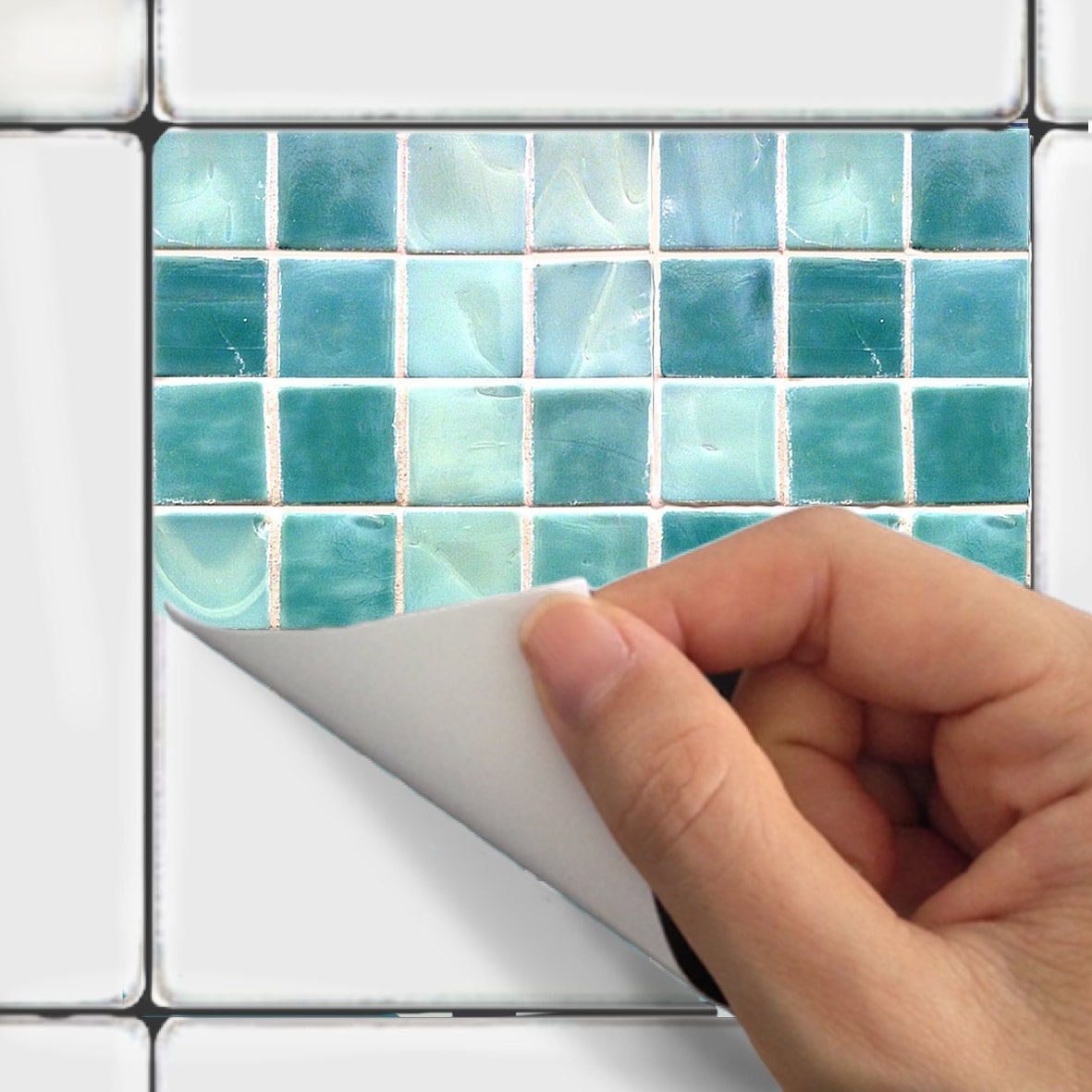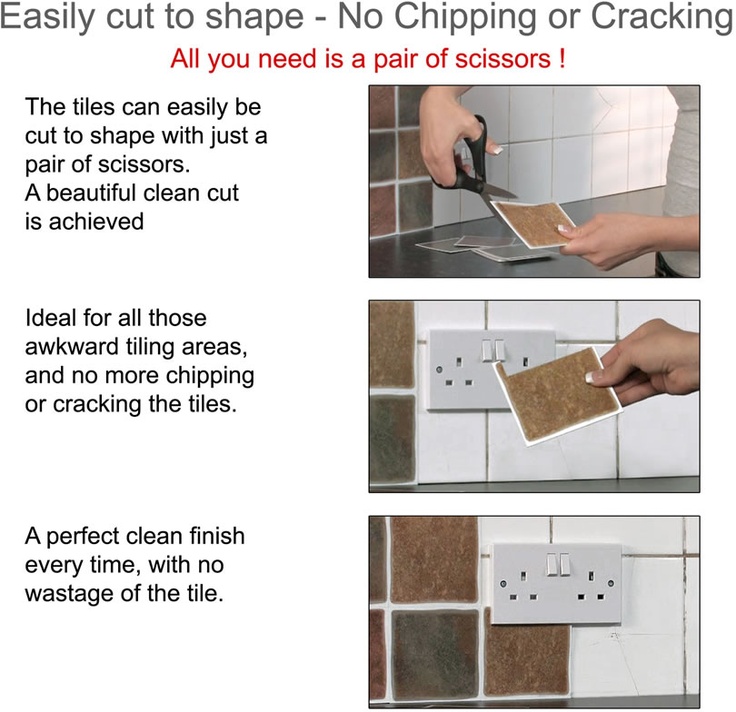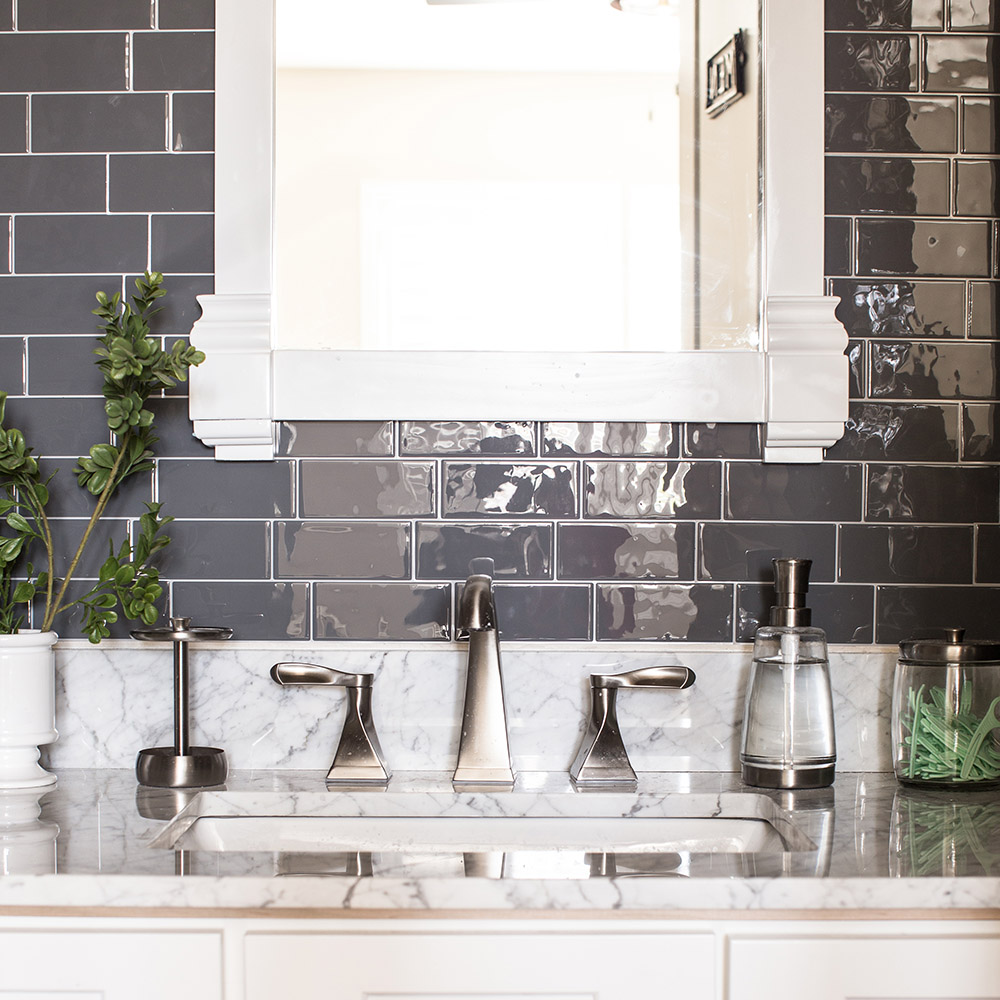

Bathroom wall stick on tiles install#
The blue stripe sticks out too much to install Smart Tiles. So, it is not recommended to install Smart Tiles on a wall with thick reliefs. However, if the reliefs are quite thick, they risk remaining visible regardless of which peel and stick Smart Tiles model you use. The imperfections will remain, but they won’t be really visible many people won’t notice them at all. On the other hand, Smart Tiles with many colors and textures will hide small reliefs on the wall. The different texture levels will be quickly visible and will ruin the beauty of the backsplash. The wall’s imperfections will be really apparent with plain Smart Tiles like Subway White. The unevenness of a ceramic backsplash will be more or less visible depending on the Smart Tiles model. On this wall, the relief will appear on some Smart Tiles models, but others will hide it. If the reliefs or recesses are big, the imperfections will be hard to cover up with Smart Tiles. With these types of surfaces, it is the esthetics of the backsplash that you have to be careful with. It is also not recommended to install Smart Tiles on a dented, damaged surface or one with reliefs, like uneven ceramic backsplash tiles. Uneven Surfaces and Walls with Reliefs (raised or textured) Peel and stick Smart Tiles won’t stick properly on most porous surfaces but, with extra preparation they will. Here is a partial list of dusty and porous surfaces that are not recommended: The peel and stick tiles won’t completely bond to the wall and risk falling on your kitchen or bathroom floor! On these kinds of walls, the tiles will stick to the dust before adhering to the surface. This is why we recommend avoiding certain types of walls.ĭusty, porous or crumbling surfaces will harm the durability of Smart Tiles. Some kinds of surfaces can compromise the adherence of the peel and stick wall tiles and others may take away from the beauty of the backsplash. Surfaces that are Not Recommended for Peel and Stick Smart Tiles With a good cleaning, peel and stick Smart Tiles will stick on your kitchen or bathroom backsplash for as long as you want. No extra preparation is needed on a smooth surface. The smooth ceramic tiles with small joints and grout lines are perfect for peel and stick Smart Tiles. wallpaper (if some corners are peeling, just peel them off and install Smart Tiles over them).painted gypsum (the paint must have been applied at least 21 days before),.Here is a partial list of ideal surfaces for Smart Tiles: So, a non-textured wall or backsplash is perfect for Smart Tiles because the tiles will have an excellent grip. Easily add a splashback or tiled accent to any room in the home with B&M wall tiles.

Bathroom wall stick on tiles update#
Peel and stick Smart Tiles may be installed without any problem on any smooth undamaged surface. Quickly update your home with our range of self adhesive wall tiles. Recommended Surfaces for Peel and Stick Smart Tiles Here is an overview of the surfaces that we recommend or advise against for installing peel and stick backsplash. This is why it’s important to be careful when choosing the type of surface for Smart Tiles.

Note: A utility knife is easier than using scissors.There are some surfaces that are not suitable for installing peel and stick Smart Tiles on and which may even prevent the tiles from sticking on the wall or backsplash. You will also need to cut for any electrical sockets, faucets, or other objects on the wall.

You will likely need to make cuts at the end of the area. Start applying the rest of the tiles, overlapping them where it indicates ‘overlap here’. Then slowly peel off the rest of the backing and push out any air bubbles as you go. We recommend peeling about 5cm of the backing and sticking that small area first, making sure it's positioned correctly. Pay close attention when sticking on the first tile. For the first tile of every row, keep the cut-off remnants, as you may be able to use these pieces to finish the row. Unless the tile is a square, you will likely need to cut the first tile in a row to make sure it's flush. Once you’ve planned the layout, measure and cut the first tile. Pay attention to where your tiles indicate ‘overlap here’. Tiles should be laid from left to right and top to bottom, so start at the top left corner first. Place some tiles over the area without sticking them on and visualise what you want to do.


 0 kommentar(er)
0 kommentar(er)
